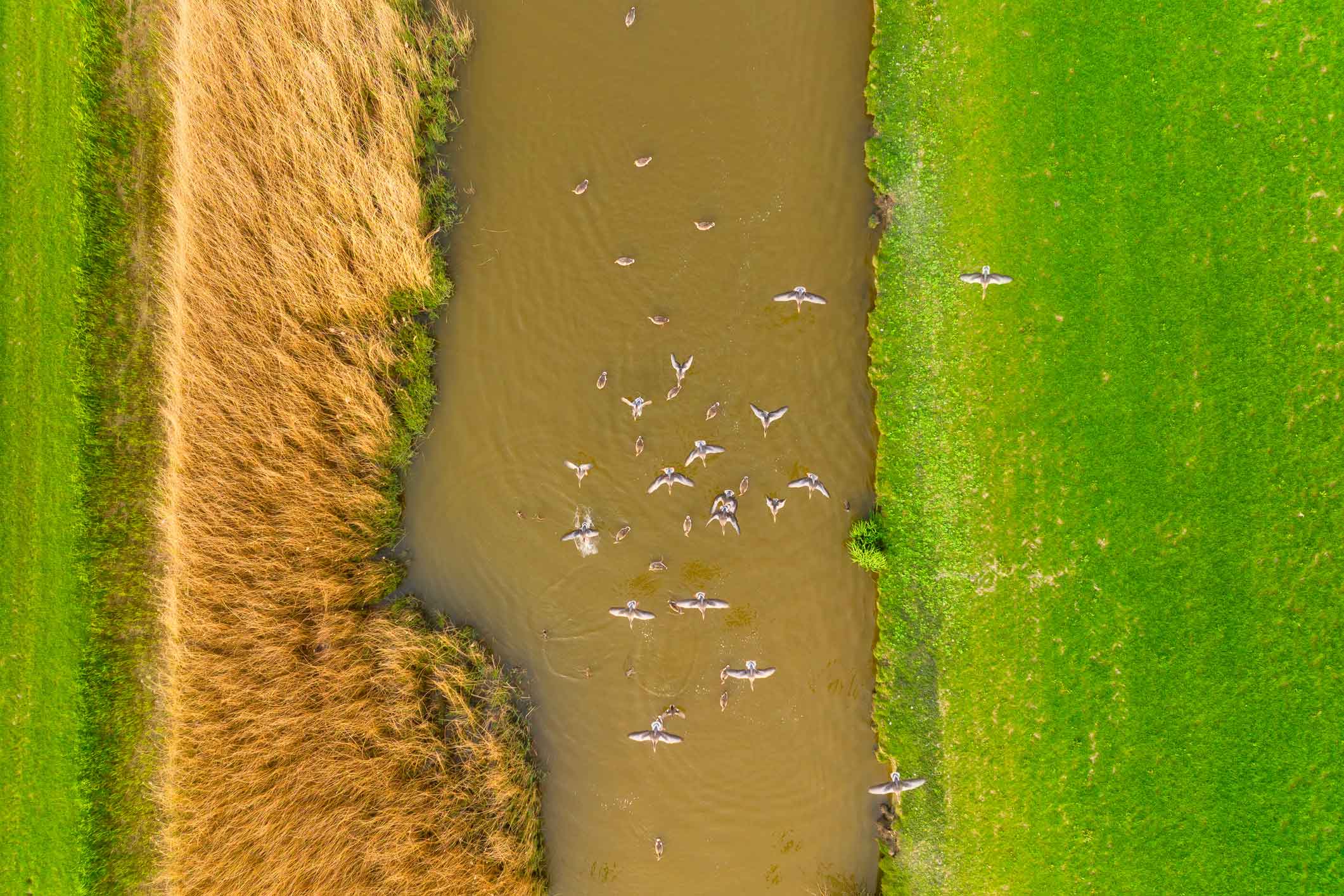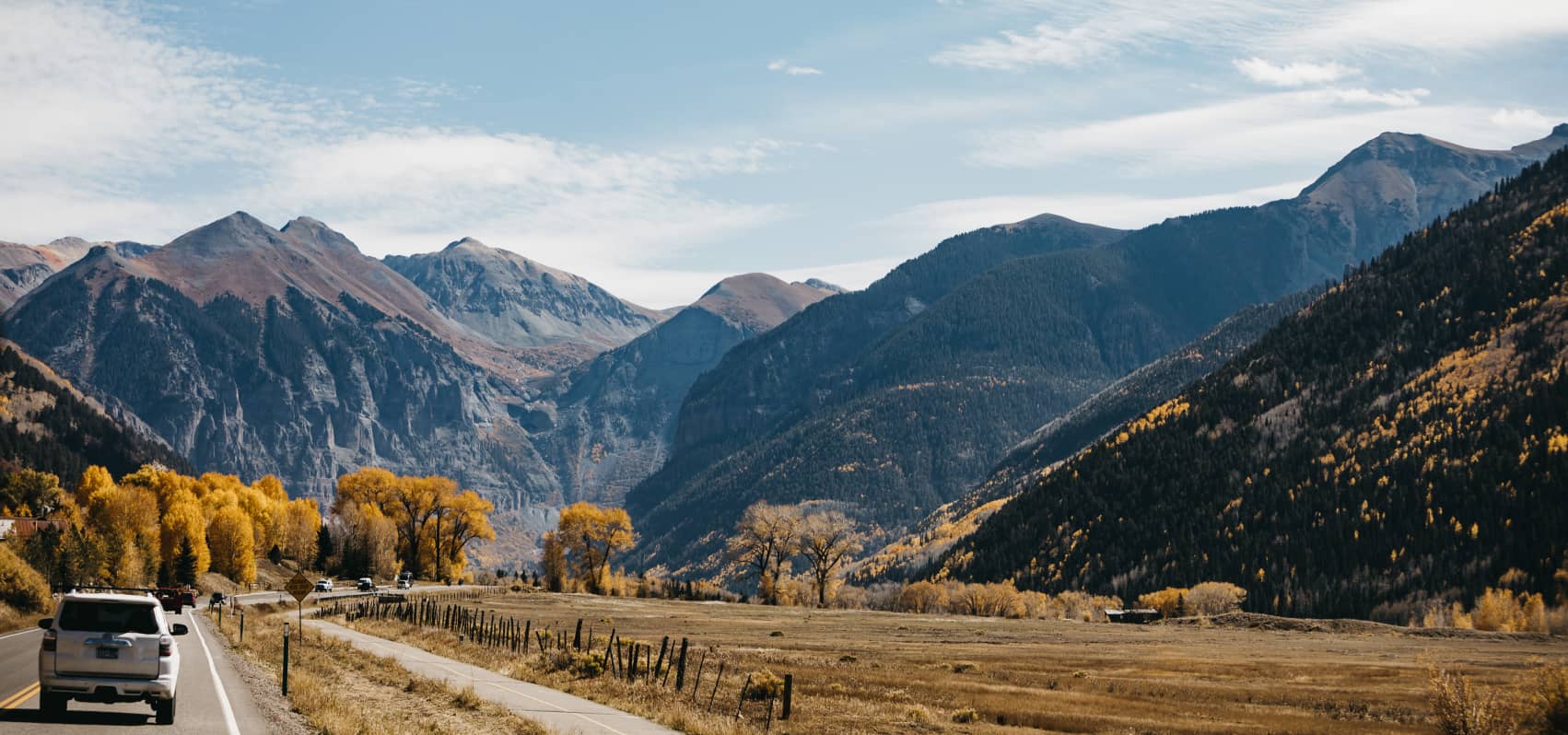Conservation
Birds and Energy: What Birds Teach Us About Energy and the Planet
From canaries in coal mines to Blackpoll warblers, birds reveal lessons on energy, climate, and resilience that can guide us toward a sustainable future.

By Martin Ogle
At first glance, birds and energy might seem unrelated—but they are deeply connected. Birds offer valuable insights into energy efficiency, resilience, and adaptation. Take the Blackpoll warbler, for example. This small bird makes a remarkable 1,800-mile non-stop migration over the ocean between North America and South America —a biological feat that reveals nature’s own energy strategies. (More on that later.)
Of course, our human energy systems, especially those tied to fossil fuels and climate change, have a profound impact on birds. This includes changes we are observing in the timing and extent of migration due to temperature changes and food availability. Find out much more at Shifting Timelines: is a Warming World Changing how Birds Migrate? | Audubon Vermont.
These kinds of concerns about birds and energy have compelled the National Audubon Society to state that “There is no path to stabilizing the climate without addressing biodiversity loss and dramatically changing how we produce electricity.” It’s taken society some time to understand this imperative, and birds started our learning curve over 100 years ago!
In the late 1800s, Scottish physiologist John Scott Haldane discovered that canaries, with their sensitive respiratory systems, could detect toxic gases before humans could. Their small bodies made them effective biosensors. Canaries were used from 1896 until the 1980s, as early warning systems in coal mines to avoid carbon monoxide poisoning and the lethal, explosive buildup of methane. These canaries in the coal mines could warn us of danger at the level of a human body or a coal mine, but birds are emerging as one of our primary warning signs for danger at a much greater level.
Since 1865, the U.S. has produced more than 12.6 billion short tons of coal. That’s the equivalent of every American using enough coal each year to fill an average living room. The emissions from that coal have released an estimated 10 trillion tons of carbon dioxide—just from the U.S.—helping push global CO₂ levels from about 287 ppm in 1865 to over 415 ppm today.
Coal combustion has arguably been the single largest driver of the atmospheric changes now reshaping Earth’s climate—and birds are already responding. Changes in migration patterns, declining populations, and even altered body sizes are all signs that bird species are being forced to adapt to a warming world. In the skies, forests, and backyards., the shifting behaviors and declining numbers of birds are signaling something is wrong with our shared environment.
The reason birds are such effective indicators lies in physiology. Their small bodies and high metabolic rates make them sensitive to environmental change. Earth’s ancient physiology—the global system of carbon sinks, atmospheric regulation, and climate balance—is also being disrupted by fossil fuel use. In a sense, our planet is undergoing its own form of metabolic imbalance.
Beyond climate change, modern energy infrastructure has its own direct impacts on birds. Wind turbines kill an estimated 500,000 birds each year in the U.S. Power lines and buildings are even more lethal, accounting for up to 175 million and 1 billion bird deaths annually, respectively.
Some species—like pigeons and starlings—have adapted and even thrived due to human development. But overall, bird populations have declined by 29% in the last 50 years, according to studies from the American Bird Conservancy.
Human activity, especially how we produce and use energy, continues to shape the fate of the natural world—and our own.
Now, for the good news.

Birds don’t just warn us—they can also inspire solutions. Consider how a duck stands on ice without freezing. With body temperatures averaging 106°F (much higher than humans), birds use a clever adaptation called counter-current heat exchange. Warm, arterial blood from the body heats up the cooler, veinous blood returning from the legs, minimizing heat loss.
This same principle is used in energy-efficient building systems and geothermal heating and cooling. It's an example of biomimicry—design inspired by nature—which could help us rethink how we conserve and transfer energy in our homes, cities, and technologies. Given that buildings use 40% of our nation’s energy and heating is the largest part of that load, just learning from and mimicking birds on heat conservation, alone, represents incredible opportunity for solving human energy challenges! There are lessons in the insulative feathers of penguins, the hibernation-like behavior of Common Poorwill’s and torpor (temporary lowering of metabolism) of hummingbirds!
And, let’s revisit the amazing Blackpoll warbler. On their spring-time flights to their breeding grounds in Canada and Alaska, Blackpolls fly over the Caribbean and Gulf of Mexico, sometime island hopping along the way, and then continue on through eastern North America. However, their fall migration is a very different matter. The first part of their long trip back to South American is a flight east to Nova Scotia and New England, where they assemble and eat copious amounts of insects and berries. They double their body weight in less than two weeks. The fat they put on fuels their incredible 1,800 mile flight, and when they reach South America, they arrive at their original body weight.
A Living Planet, A Shared Future

Earth is not just a backdrop—it’s a living, dynamic system powered by the sun. The choices we make about how we harness and use energy ripple through that system, affecting every living thing, birds included.
But birds do more than suffer the consequences. They reveal patterns, provide warnings, and model strategies for survival. Their beauty and brilliance are not just symbolic—they’re instructive. They may be among our best teachers for living wisely within Earth's limits. Birds, the warmest creatures on Earth, have evolved remarkable ways to manage heat—retaining it when necessary, dissipating it when not. We humans can consciously evolve our ways of managing our heat as well. One solution that is available to all home and/or business owners, right now, is to take advantage of EnergySmart Colorado. This is a program that provides step by step guidance for reducing our building energy usage, and its wide-spread use could reduce energy demand significantly!
But let’s take one last look at the Blackpoll to sense a broad perspective of our energy challenges. The story of humanity is, in many ways, one big migration. We emerged from Africa and spread throughout the world in search of food, reduced competition, escape and more. In many ways, our migrations are just as stupendous as those of birds. Perhaps we can see the seasonal strategies of Blackpolls as a metaphor for our predicament. We humans have not only migrated all over the world, we have learned to harness astounding kinds and amounts of energy along the way. Like Blackpolls preparing for migration, humanity has consumed voraciously. But unlike these diminutive birds, we may have been on an ever-upwards trajectory and have grown beyond sustainable limits. Now, we face a perilous journey across an unknown ocean to the future.
If we listen carefully, perhaps the birds will guide us—showing us how to live, migrate, and thrive within Earth’s ever-changing physiology.
____
Martin Ogle is founder of Geo Sapiens; The Earth-wise Human, a nonprofit dedicated to integrating environmental education, energy awareness, and job readiness (especially for youth, but for all ages). “Birds and Energy” is one such exploration. He will present this program at Kingery Nature Center on the evening of October 18.
The allure of off-the-beaten-path travel
Lorem ipsum dolor sit amet, consectetur adipiscing elit ut aliquam, purus sit amet luctus venenatis, lectus magna fringilla urna, porttitor rhoncus dolor purus non enim praesent elementum facilisis leo, vel fringilla est ullamcorper eget nulla facilisi etiam dignissim diam quis enim lobortis scelerisque fermentum dui faucibus in ornare quam viverra orci sagittis eu volutpat odio facilisis mauris sit amet massa vitae tortor.

Unveiling the charm of lesser-known Destinations
Orci sagittis eu volutpat odio facilisis mauris sit amet massa vitae tortor condimentum lacinia quis vel eros donec ac odio tempor orci dapibus ultrices in iaculis nunc sed augue lacus.
- Lorem ipsum dolor sit amet consectetur facilisi etiam dignissim diam quis enim
- Mauris aliquet faucibus iaculis dui vitae ullamco sit amet luctus
- Posuere enim mi pharetra neque proin dic rhoncus dolor purus non enim
- Dui faucibus in ornare posuere enim mi pharetra neque proin dicit
Finding solitude in hidden gem locations
Lorem ipsum dolor sit amet, consectetur adipiscing elit ut aliquam, purus sit amet luctus venenatis, lectus magna fringilla urna, porttitor rhoncus dolor purus non enim praesent elementum facilisis leo, vel fringilla est ullamcorper eget nulla facilisi etiam dignissim diam quis enim lobortis scelerisque fermentum dui faucibus in ornare quam viverra orci sagittis eu volutpat odio facilisis mauris sit amet massa vitae tortor condimentum lacinia quis vel eros donec ac odio tempor orci dapibus ultrices.
The thrill of discovering untouched natural beauty
Dolor sit amet, consectetur adipiscing elit ut aliquam, purus sit amet luctus venenatis, lectus magna fringilla urna, porttitor rhoncus dolor purus non enim praesent elementum facilisis leo, vel fringilla est ullamcorper eget nulla.
- Lorem ipsum dolor sit amet consectetur tempor orci dapibus ultrices
- Mauris aliquet faucibus iaculis dui vitae ullamco elementum facilisis
- Posuere enim mi pharetra neque proin dic fermentum dui faucibus in ornare
- Purus sit amet luctus posuere enim mi pharetra neque proin dic
“Ut enim ad minim veniam, quis nostrud exercitation ullamco laboris nisi ut aliquip ex ea commodo consequat uis aute irure dolor in reprehenderit in voluptate velit”
Exploring cultural marvels off the tourist radar
Donsectetur adipiscing elit ut aliquam, purus sit amet luctus venenatis, lectus magna fringilla urna, porttitor rhoncus dolor purus non enim praesent elementum facilisis leo, vel fringilla est ullamcorper eget nulla facilisi etiam dignissim diam quis enim lobortis scelerisque fermentum dui faucibus in ornare quam viverra orci sagittis eu volutpat odio facilisis mauris sit amet massa vitae tortor condimentum lacinia quis vel eros donec ac odio tempor orci dapibus ultrices in iaculis nunc sed.



